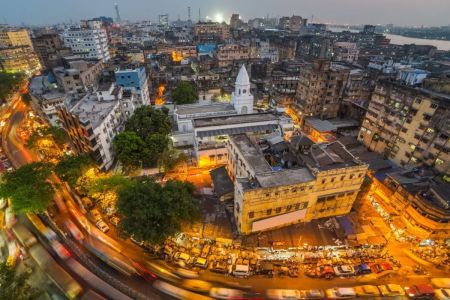Amazing Temples to Visit in India: Explore the Spiritual Heart of the Country
1. Why Visit Indian Temples?
India is a land of rich spiritual history, and its temples are not just places of worship but also centers of art, architecture, and culture. Whether you're seeking spiritual enlightenment, an appreciation for stunning architecture, or simply a deeper understanding of India's cultural heritage, visiting Indian temples offers an unforgettable experience. The diversity of temples, each with its unique stories and spiritual significance, makes India a top destination for travelers interested in both history and spirituality.
Temples in India range from grand and intricately designed stone structures to humble, serene shrines nestled in remote locations. As a traveler, you can explore a variety of temples that tell stories of ancient gods and goddesses, local legends, and regional history.
2. Top Temples to Visit in India
India boasts some of the most awe-inspiring temples in the world. Here's a selection of must-visit temples across the country that stand out due to their historical importance, unique architecture, and religious significance:
- Golden Temple (Amritsar, Punjab): The holiest shrine of Sikhism, the Golden Temple is a breathtaking sight, especially when it glows under the setting sun. Visitors from all over the world come here to experience its tranquility and devotion.
- Temples of Khajuraho (Madhya Pradesh): Known for their stunning sculptures depicting various aspects of life, love, and spirituality, these temples are an architectural marvel and a UNESCO World Heritage site.
- Meenakshi Temple (Madurai, Tamil Nadu): A majestic temple dedicated to Goddess Meenakshi, this temple is a perfect example of Dravidian architecture, adorned with towering gopurams and intricate carvings.
- Sun Temple (Konark, Odisha): The Sun Temple is a UNESCO World Heritage site famous for its exquisite stone carvings and the intricate design of the temple, shaped like a chariot.
- Jagannath Temple (Puri, Odisha): A major pilgrimage site for Hindus, this temple is known for its annual Rath Yatra festival, where the deities are taken on grand chariots through the streets of Puri.
3. What to Expect During Your Temple Visit
Visiting temples in India is not just about admiring the architecture; it's about immersing yourself in the spirituality and traditions that come with these sacred sites. When you visit a temple, expect to be surrounded by an atmosphere of peace and reverence, with the sounds of bells, chants, and devotional songs filling the air. Many temples offer rituals and prayers that visitors can participate in, allowing for an authentic cultural experience.
For example, in the Golden Temple, you can join in the Langar, a community meal that is served free of charge to all visitors, reflecting the Sikh principles of service and equality. Similarly, in Meenakshi Temple, you can witness the ceremonial rituals performed by the priests, and learn about the mythology behind each deity represented in the temple.
4. Cultural Insights and Spiritual Significance
Each temple in India is deeply rooted in the local culture and religion, offering profound insights into the traditions and spiritual beliefs of the people. Many temples hold annual festivals that attract millions of pilgrims, and these events provide an opportunity to witness the vibrant cultural heritage of the region.
In places like Varanasi, the Kashi Vishwanath Temple draws visitors for both its religious importance and its connection to the Ganges River, making it a significant site for spiritual reflection. Additionally, in Rajasthan, the Dilwara Temples are known for their breathtaking marble architecture, offering an unforgettable view of the beauty that can be created with stone.
5. How to Plan Your Temple Visit in India
Visiting temples in India can be a deeply enriching experience, but planning your visit carefully is key to ensuring that you make the most of it. Consider the following tips when planning your temple visit:
- Dress Modestly: Temples in India are places of worship, so it's important to dress modestly. Many temples require visitors to cover their heads or remove their shoes before entering.
- Respect Local Customs: Each temple has its own set of rules and rituals. Be sure to ask about local customs and follow the guidance of temple staff or priests.
- Best Time to Visit: Some temples are more crowded during major religious festivals, while others are quieter during the off-season. Plan your visit based on your preference for solitude or participation in vibrant festivals.
- Book Temple Tours: For a deeper understanding of the temples and their cultural significance, consider booking a guided tour. Expert guides can provide historical and spiritual insights that make the visit more meaningful. Visit Travel India One for booking your temple tours.











